We may receive a commission when you make a purchase from one of our links to sites such as eBay and others. As an Amazon Associate we earn from qualifying purchases. Thank you for support!
If you ever find an old key, you might be wondering what type of lock it goes to or what kind of key it could be. Understanding the different types of antique keys and a little bit about locks throughout history can help you identify what kind of key you may have found.
In this post we’ll share the history of old keys, the many types of keys with image examples and a list of popular key manufacturers to help you identify your keys and estimate their value!
The History of Keys: Our Quest for Security

Security is a basic human need, and so it’s not surprising that locks and keys have a long and fascinating history that spans over thousands of years.
When you think about the sorts of reasons people used locks and keys, there certainly are a lot of stories one can imagine from just a single key found.
While we don’t know a whole lot about how the very first locks and keys ever made came to be, there is evidence of keys and locks being used in the archeological ruins of what was once the Mesopotamia kingdom.
We’ve used keys for all sorts of things – to protect our homes, protect our valuables, or even to protect our deepest inner thoughts scrawled in an old diary.
For this reason, many people see the key as a symbol for wisdom, knowledge, hidden and guarded secrets or even protection.
Travelers often needed keys and locks when they went to different places, since thieves tend to target people who are unfamiliar with local knowledge.
Keys have also often been lost over the years, so it’s one of those things you might find often when you are metal detecting!
What Are Keys Made Of?

Historically, keys have been made from all sorts of materials, including wood, although the ones you will most likely find today are made from different types of metal, such as yellow brass, white brass (also called sometimes called nickel silver), and steel.
If you are not sure what kind of metal your key is made of, one of the easiest ways to find out is to hold a magnet to it. If the key does not stick to a magnet, it is likely stainless steel or brass. If the key does stick to a magnet, it is most likely made out of steel and iron.
Note that a lot of keys are made from magnetic ferrous metals prone to rust, so just because it’s rusty doesn’t necessarily mean it is old or an antique!
Today there are also a lot of reproductions and replacement keys that mimic old fashioned key styles so this too is something to consider if you stumble across an old key and wondering its value.
The good news is the charm and demand is higher than ever for old vintage keys (or even keys that look vintage). People love to use them for crafts and decorate with them!
In today’s digital era, keys sometimes are not even needed. Most hotels have completely bypassed traditional key and lock systems and use a plastic card that looks like a credit card that you swipe through the slot on the door or may use a pin or fingerprint based system to allow access.
Identifying Key Styles By Shape & Common Use

The first step in identifying a key you might find is to look at the shape of the key and take note of any marks that might indicate the brand or manufacturer. A lot of times you can identify what a key is used for based on its shape and style.
1. Antique Barrel Keys & Round Keys for Old Doors

These keys are what most people visualize and think of when we talk about old antique keys. Some people call them skeleton keys, but they are not always true skeleton master keys that can open every door in a building. {More on that in a bit!}
Large barrel keys were most frequently used in locks for opening doors. Most of the keys were used for houses, offices, and other areas where one wanted to limit access to others.
These barrel keys are relatively easy to identify because they have an opening at the end shaft of the key, much like a “barrel”.
A notable manufacturer of this style of lock is the Corbin brand, which started in 1839 and still exists today under the Corbin Russwin brand of parent company ASSA ABLOY.
If you find an old style Corbin Russwin key, it very well likely may have been used in a school, factory or hospital, since they manufactured locks and keys primarily for commercial and institutional use. Corbin also manufactured quite a bit of master keys, so let’s talk about that next.
2. Skeleton Keys and Master Keys

Master keys {aka true skeleton keys} are one type of key that is usually associated with hotels, apartment buildings, warehouses, churches, offices and institutions because often times many different people needed different types of access to different parts of a building.
In a public building for example, the janitor may need a key to every room to clean, but not every worker needed to access every single room. The janitor would have a master key that could open all the doors, while a worker may only have a key to his or her specific office.
Most master keys have the rounded barrel style and shape, but typically a master key will only work in a building where all of the locks match that specific key.
For example, if you have a master key for a building in New York, it is highly improbable that same master key would open all the doors in a building in Philadelphia or Boston.
If you’re hoping that you can buy any type of skeleton key and it will open your old lock, this unfortunately is probably not the case…but you can certainly try. You just might get lucky!
Antique barrel keys are often mistaken as skeleton keys because they share a similar style and shape. There are typically a couple of notable differences, but unless you are a locksmith it can sometimes be difficult to tell.
The keys that go along with master keys are sometimes called valet keys {useful for cars parked in a garage where you do not want to give the attendant access to the glove box} and are also sometimes called (controversially) as slave keys. This essay by Peggy Shinner on LitHub is an insightful read on that topic.
3. Phonograph Cabinet Keys
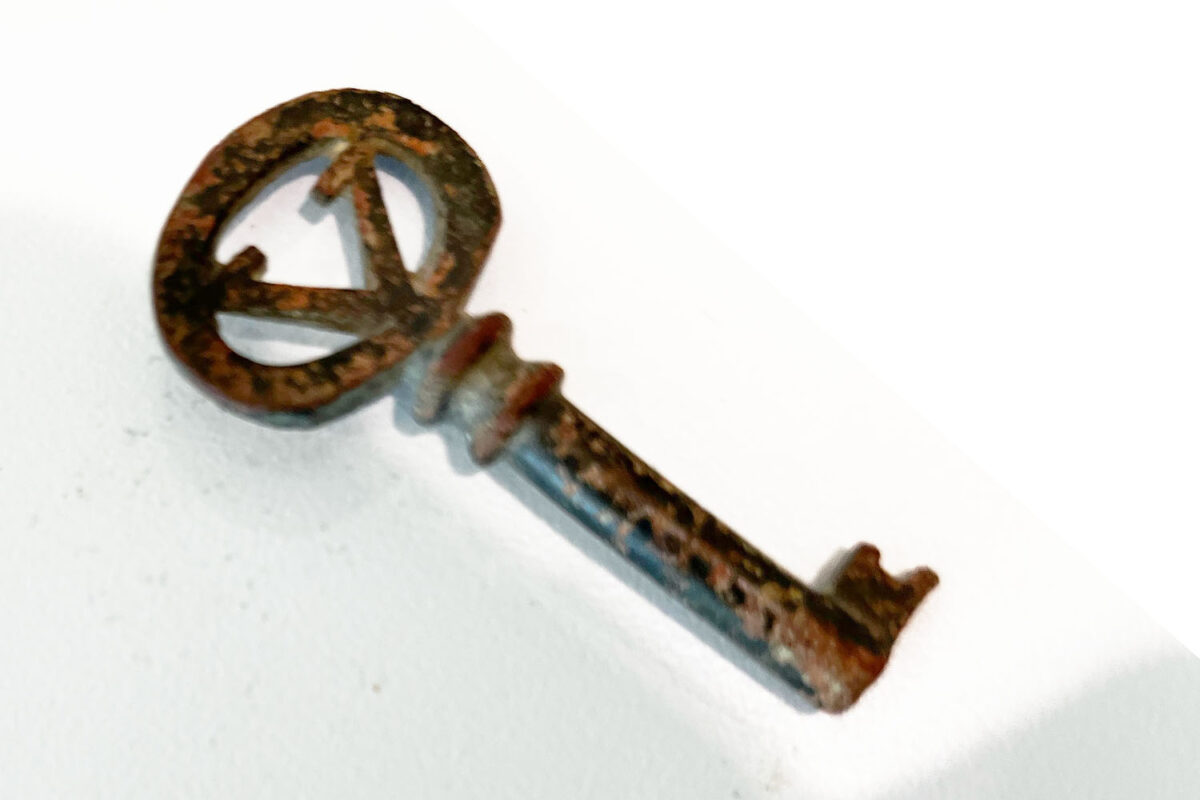
Phonograph cabinet keys are very similar in style to antique barrel keys, but one main difference is they usually have some type of specialty design on the head/bow of the key or in some cases even a logo/maker’s mark on them.
Phonograph cabinet keys can be made of brass or sometimes may even be nickel plated or gold plated. If you think your antique barrel style key might be for a phonograph cabinet, check out The Old Crank’s guide to phonograph keys – nifty stuff and will help you date that cabinet key easily!
4. Antique Chest and Trunk Keys
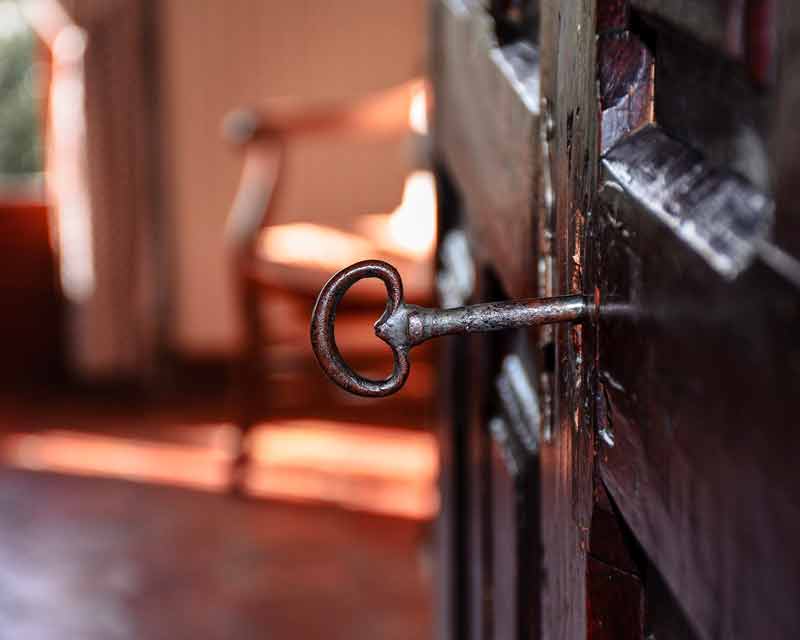
These keys have similar rounded barrel shape and style as the skeleton keys, but they are usually a little bit smaller than keys used for doors. These smaller versions of barrel keys were often used to lock things like trunks and chests.
The keys you may find of this variety very well could have once belonged to an old antique steamer trunk. Once the railroads in the U.S. were built, it was very common for people to travel by rail to visit family and friends.
5. Vintage & Antique Suitcase Keys

While most people no longer pack a large trunk and chest when they go traveling, they do usually pack a suitcase! Suitcases made their appearance sometime in the late 1890’s but did not really gain more popularity until the early 1900’s.
Suitcases were much lighter than heavy steamer trunks, and so were their locks and keys. These locks and keys were most practical for keeping the suitcase from coming open during travel and were not necessarily for security.
In the 1970’s, suitcases began to shift in style and design, and today many people use simply bags or rolling cases. While a suitcase key you find may be over 50 years old, these keys aren’t much different in style or shape than ones you can buy today.
6. Stringed Instrument Case Keys
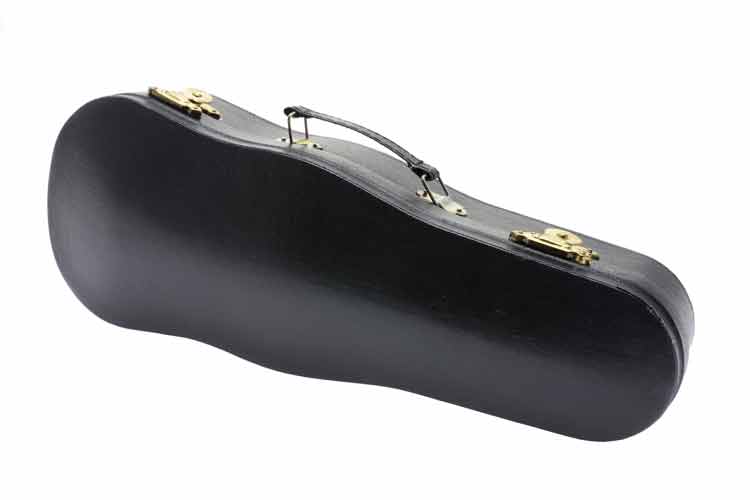
Many musical instruments such as the violin, guitar and mandolins have locks on the hard body shell style of cases. While these locks are not exactly practical for security (it’s very easy to just pick up a musical instrument and run!) – but they did help ensure that the case would stay closed while traveling, since many musicians often travel to perform.
These keys are typically small and similar to a suitcase style of key, but can sometimes be found in the rounded barrel shape associated with antique door keys and skeleton keys.
7. Vintage Car Keys

The first car key was invented by Chrysler in 1949 as a means to turn on the ignition of a car. Other car manufacturers such as Ford soon followed suit and by the 1960s almost every car needed keys in order to be able to drive.
These early keys were pretty simple to reproduce…and the type of lock unfortunately was also pretty easy for car thieves to work around and start a car.
In the late 1980’s, car manufacturers began experimenting with different ways to make cars more difficult to break into and steal. Chevrolet and Cadillac introduced coded keys and by the 1990s most cars came with a fob that could unlock doors and set off alarms.
While the technology and style has changed over the years on modern car keys, one very interesting thing to think about is is pretty soon we may no longer even need them!
Many of the newer cars starting in 2017 do not even require a key to turn on, which some of us who learned to drive on older cars may never quite get used to. (I’m starting to, slowly! lol)
One thing that makes car keys collectible is there are many people who collect different types of car memorabilia. People tend to be very loyal to their favorite kinds of cars, whether they are a “Ford Person” or a “Chevy Person”.
Antique car shows are a favorite summer past time for many people, and even car dealers, mechanics and car stores like to decorate with various old car themed memorabilia.
For this reason, if you have old car keys you don’t want, while they may not exactly be a high value item, there are certainly a lot of people who might want them!
8. Tubular Keys / Vending Keys
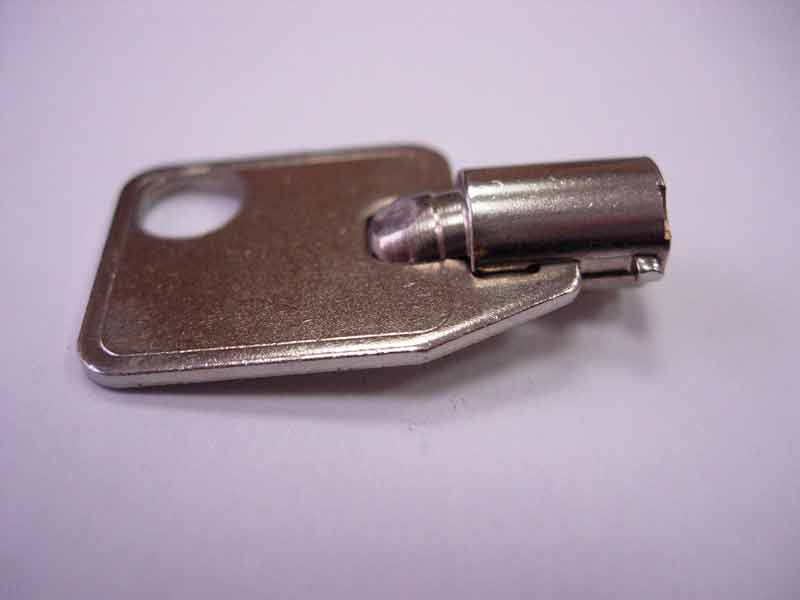
This type of key is easy to identify because it looks very different from other kinds of keys. It usually is flat and short with a round stem shaped like a cylinder. These kinds of keys have a hollow stem that actually fits over the center post inside the lock.
While no lock is fully “thief proof”, one advantage of these keys is they are harder for the average person to break into. The round tubular style of the key is more difficult for thieves to pick unless they have certain tools generally only available to licensed and registered lock smiths.
Because they are a deterrent for your average thief, these types of keys are very common for things that need to be locked in public areas. You will often encounter this style of these kinds of keys for high-security types of things such as fireproof safes, vending machines, coin-operated laundromats and bike locks.
Some restaurants, stores, and travel plazas even use these styles of keys to lock up the toilet paper in public restrooms!
9. Padlock Keys
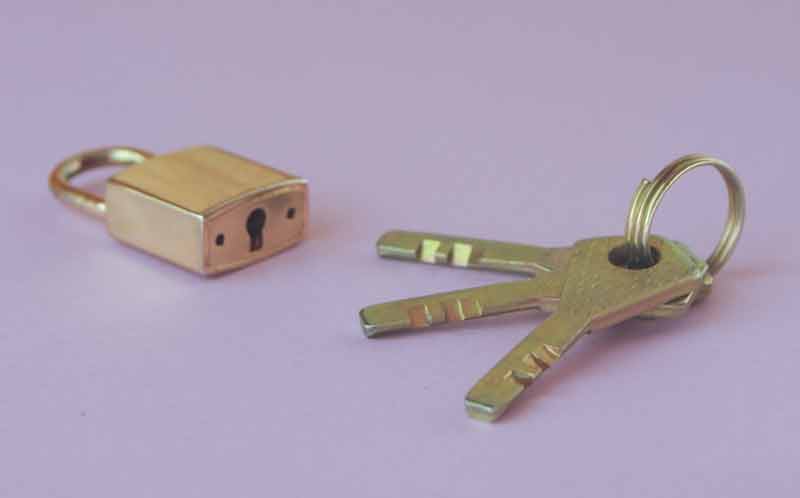
The earliest known form of padlocks were used in the Roman Era, dating sometime around 300 – 400 BC, although early forms of them have also been found in ancient China.
A padlock is often used in situations where one needs portability, and so these were a popular lock used by merchants who traveled the trade routes.
When you consider how far and often these merchants traveled, it is not surprising how quickly these types of locks and keys made their way around the entire world!
The padlock consists of three parts: the body, the shackle, and the locking mechanism itself. Padlocks have been used to guard trunks, chests, containers, sheds, barns, gates, and more.
They can be cut off if absolutely necessary, but that typically requires tools or brute force entry that would draw attention or leave evidence that could lead to catching the thief.
Smaller, light-duty padlocks were often used for things such as cabinets, furniture doors and small chests and wooden boxes. These padlocks are not considered to be high security, but did offer some protection against people who might be snooping or kids who did not want to get in trouble for taking something.
10. Diary/Novelty Keys

If you ever find a dainty adorable key, it most likely came from either a diary or small decorative box. These styles of keys are generally only for show and not very practical for any sort of security.
Typically these keys are VERY small, and some replications may not have ever belonged to any sort of working lock – they are simply for decorative use.
You can also sometimes find novelty padlocks and keys that were sometimes created and used for protecting diaries or jewelry boxes.
I personally like to use these types of keys as unique charms for bracelets, keychains, crafts, assemblage art, miniatures, and dioramas. There are a lot of fun ways they can be used!
11. Clock Keys & Watch Winders
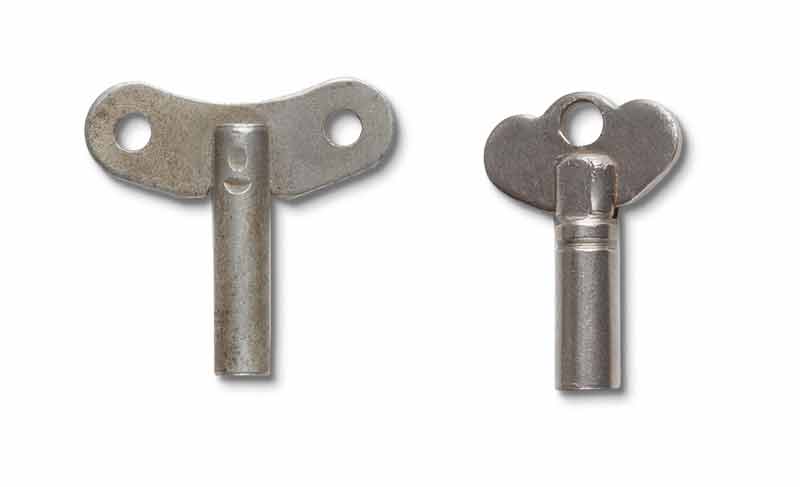
Another type of old vintage key you may sometimes encounter are clock keys and watch winders. These keys were used to wind the gears inside old watches and clocks.
You can find these types of keys that once belonged to carriage clocks, antique clocks, pocket watches, and even music boxes. Sometimes you’ll find keys that belonged to old miniatures and collectible toys that have small engines made by Meccano Motors.
Brands & Manufacturers of Different Keys Through History
Now that we understand a good bit about the different kinds of keys, it’s also helpful to have a little bit of familiarity with the different brands and manufacturers throughout history.
Locksmithing as a career and trade truly boomed in the mid 1800’s, and once the Industrial Revolution began many more companies emerged.
Here are some common manufacturers for different lock brands and keys:
- Crouch & Fitzgerald
- Corbin Eagle
- Everlasting
- Excelsior
- Hartmann
- Long
- Milwaukee
- Presto
- Star
- Wheary
- Yale {Also known as Yale & Towne}
Keys would also often have different companies and brands stamped on them, depending on what the company made.
For example, Ford and GMC have their logos engraved on a lot of the older model car keys. Samsonite, a company well known for suitcases and luggage also often had their brand stamped on the key.
What Are Old Keys Worth? Are Old Keys Worth Anything?
The last question a lot of people ask is whether or not old antique keys are worth anything. The answer is – maybe, it depends.
Here are the factors to consider when we value old keys:
Age: Generally speaking, the older something is the more potential value it might have. Ancient keys that are over 500 years old certainly do fetch a nice amount, although they are not generally easy to find and also do not have a huge market.
Condition: Condition is another important factor to consider with antique and vintage keys. If the key is significantly rusty or is broken, it is probably better suited for craft projects than selling as an antique item.
Material: Another thing to consider is what the key is made of. Precious metals such as gold and silver are going to fetch far more than a key made of ferrous iron. Brass keys are common, but are also worth slightly more than the ones made out of iron as they will not rust and are more valuable metal at the scrap yard.
The best way to check whether your key is made of a precious metal is to take a magnet to it. If the magnet sticks to the key, it is made from ferrous metals and therefore not worth very much.
I hope this guide to the different types of vintage and antique keys is useful for you in identifying old keys and their value. If you’ve been wondering if old keys are worth anything or whether they are something to collect, the answer is yes!
Do you have any interesting vintage keys in your collection or need help identifying an old key? Share your thoughts and ask questions in the comments section below or reach out + contact us – we’re always happy to hear from you and help you identify old keys!

I have several old keys I’d like to find the value of
I have an old ford car key from im guessing around 1980’s-90’s and was wondering on how much i could sell it for
I have hundreds of key that are old but I don’t know how much or an history about them. Id like the history and to be appraised but don’t know where to begin. Help please?
I have a bunch of keys that I would like to know history and value on but can’t figure out who or how to get the answers.
The information you have given I think will help me / so thank you for that I have a key that i dug up over 6 years ago. Its short fat with a bow it has a hole on the left side the word REX in the middle & another hole on the right . the word REX on both sides. Has a little point in the middle on outside of bow.. So maybe I will be able ro figure put what it was used for… I haven’t check to see if a magnetic sticks to it or not yet.. Its heavy… Short round bass I will try to figure out how to send a picture of it to you… Thank you for the reading material
Hello, I have about 10 different Skeleton keys, 1 is a suit case key I believe. How do I find out if they are of any importance or hold any value.
I found a large key in my garden.
Found a quite interesting small key in a pothole it must have fallen out of a pocket when someone was travelling the road i was riding on. Maps show there was a highway here in the 17th century but i’m sure the key is probably 19th century if that. It’s ferrous so i want to date it to see if it might be worth anything there. Your info is very helpful i think it’s a grandfather clock key.
I have a short,maybe inch, key with no hole, opening to put on a hanger or necklace. It is cylinder shaped with just ring going downward not connecting changing shape of cylinde to slightly more narrow towards endI and is magnetic. Very dark and a bit cruded but not rested at all but unable to view any numbers or markings with what I have to work with
Hi, how can i send u photos of an old animal figuring key which
I bought it in kathmandu nepal.
Can u tell me how old it is and what or where it is use for n how much it worth.
Tq.
Hi! I found an old set of keys in the ocean on vacation in Galveston. I was just swimming and walking and stepped on them. I would like to see how old they are or if they are worth anything!
Hello,
I collect antique coin operated machines. A majority of them take only a penny. Many of them are flat keys from the Eagle lock Co. From Terryville Conn. And stamped with numbers and letters, could you tell me what the No.s and letters mean or used for? An example would be a flat key: 14TZ6, 14TP8. If you have a book on keys I would love to make a purchase.
Hi Daniel! Check out the Lock Museum of America – they are based in Terryville Connecticut where the Eagle Lock company was founded. https://www.lockmuseumofamerica.org/ They may even have some books about keys + the history of the Eagle Lock company. Hope that helps!